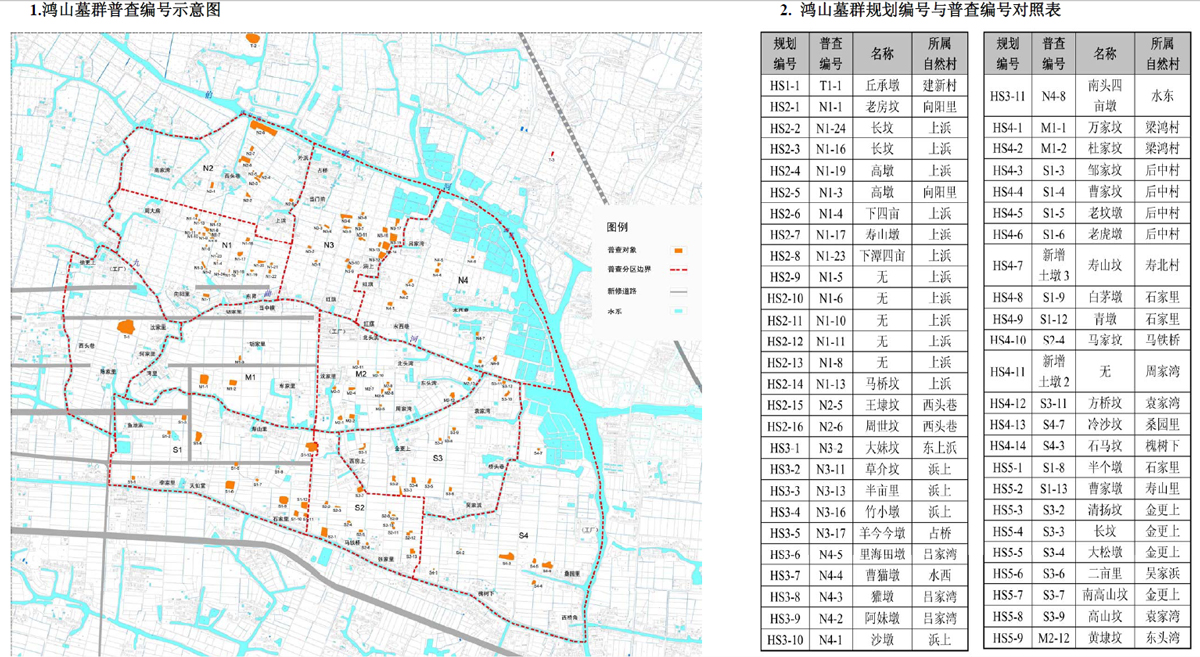Guide
Brief introduction of Hongshan site
1、Hongshan tombs in Wuxi
Hongshan tombs, located in Hongshan street, Xinwu District, Wuxi
City, are tombs in Wuyue area in the lower reaches of the Yangtze River during the spring and autumn
and Warring States periods. Due to its great cultural relics and archaeological research value, the
Hongshan tomb group was awarded the "top ten new archaeological discoveries in 2004" in 2005, and
was selected as the Sixth Batch of national key cultural relics protection units and the national
key protected sites during the "Eleventh Five Year Plan" in May and December 2006. In October 2010,
Hongshan tombs were listed in the first batch of national archaeological sites park by the State
Administration of cultural relics. In the process of protection of large sites and planning and
construction of national archaeological sites Park, Wuxi local government combines site protection
with ecological environment protection, economic and social development and people's livelihood, and
seeks "overall consideration and scientific win-win" in protection and utilization, which has been
affirmed by the State Administration of cultural relics and is known as the "Wuxi mode" of large
site protection.
2、Archaeological work of Hongshan tombs in Wuxi
Hongshan tombs were discovered in 2003. With the approval of the
State Administration of cultural relics, Nanjing Museum, Jiangsu Provincial Institute of Archaeology
and Wuxi Xishan District Cultural Relics Management Committee formed an archaeological team to
excavate the mounds in the development zone from March 2003 to May 2005. A total of 7 Yue noble
tombs including Qiu chengdun, laohudun and wanjiafen were excavated, and more than 2300 pieces of
pottery were unearthed They are made of pottery, celadon, jade, stone and glaze. At the same time,
in addition to the huge Warring States noble tombs, the Neolithic strata of Liangzhu Culture -
Songze culture - Majiabang culture period are stacked from top to bottom on Qiu chengdun. House base
sites, altars and a large number of tombs are found. Jade Cong, jade Bi, Jade axe, jade Yue, carved
pottery tripod, pottery pot and other exquisite cultural relics are unearthed. Nanjing Museum,
Jiangsu Provincial Institute of Archaeology and Wuxi Xishan District Cultural Relics Management
Committee compiled and published the excavation report of Hongshan Yue tomb and the excavation
report of Qiu chengdun - Neolithic site in Northwest Taihu Lake.
In 2006, in order to cooperate with the compilation of the general plan for the protection of Hongshan tombs, Wuxi Municipal Cultural Administration Commission organized an archaeological team to investigate the mounds within the scope of Hongshan site, and macroscopically mastered the status of the mounds within the scope of the site. In 2010, Wuxi Institute of cultural heritage protection and Archaeology carried out investigation and mapping of Hongshan site in cooperation with the compilation of "archaeological work plan for Hongshan site protection". This exploration further reviewed the earth mounds surveyed in 2006, and further understood the age nature, distribution area, existing state and stratum accumulation of the earth mounds.
From 2011 to 2015, Wuxi Institute of cultural heritage protection and Archaeology carried out more detailed key exploration on more than 40 mounds in Hongshan site and their surrounding areas, and screened the age of more than 40 mounds In addition, a trench around the mound was found around most of the mounds in the Eastern Zhou Dynasty. This important discovery makes up for the previous understanding of the distribution of the mound sites in the Eastern Zhou Dynasty, and also provides a basis for archaeological research and the protection of the mound sites Practical and reliable basis.
3、Protection plan of Hongshan tombs in Wuxi
The Wuxi Local Government commissioned the Institute of
architectural history, China Academy of architectural design and research to prepare the master plan
for the protection of Hongshan tombs. The plan was officially approved by the State Administration
of cultural relics in 2007 and promulgated by the people's Government of Jiangsu Province in
February 2010. It was incorporated into the regional economic and social development plan and the
master plan for urban and rural areas. The planning principles of the master plan for the protection
of Hongshan tombs are: to protect the authenticity, integrity and continuity of the site itself and
its environment as a whole; to combine heritage protection with ecological environment protection;
and to harmonize heritage protection with local social development. The protection principles and
objectives are: the site itself must be protected in its original site; according to the protection
requirements, the protection technology should be carefully selected and used, and the intervention
should be reduced as far as possible, and all measures should be treatable; the overall protection
of the site itself and related environment should be paid attention to, so as to achieve long-term
and complete preservation of the real historical information of the site and its environment.
According to the protection requirements, the protection area is divided into three levels:
protection scope, construction control zone and environmental control zone.
In 2012, the Chinese Academy of architectural design was entrusted to prepare the design scheme for the protection and display of Hongshan tomb group, which was approved by the State Administration of cultural relics in July of the same year. The scheme follows the principle of minimum intervention, adheres to the concept of "maintenance of the status quo and the overall layout of the tomb group with emphasis", and carries out the protection and display design of the site body and surrounding environment. Based on this, Nanjing Museum was entrusted to prepare the construction design scheme of Hongshan tomb group body protection and display project in 2013. In 2014, the implementation of Hongshan site body protection and display project was launched.
